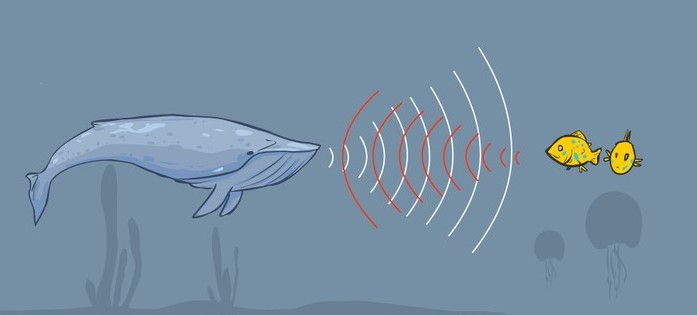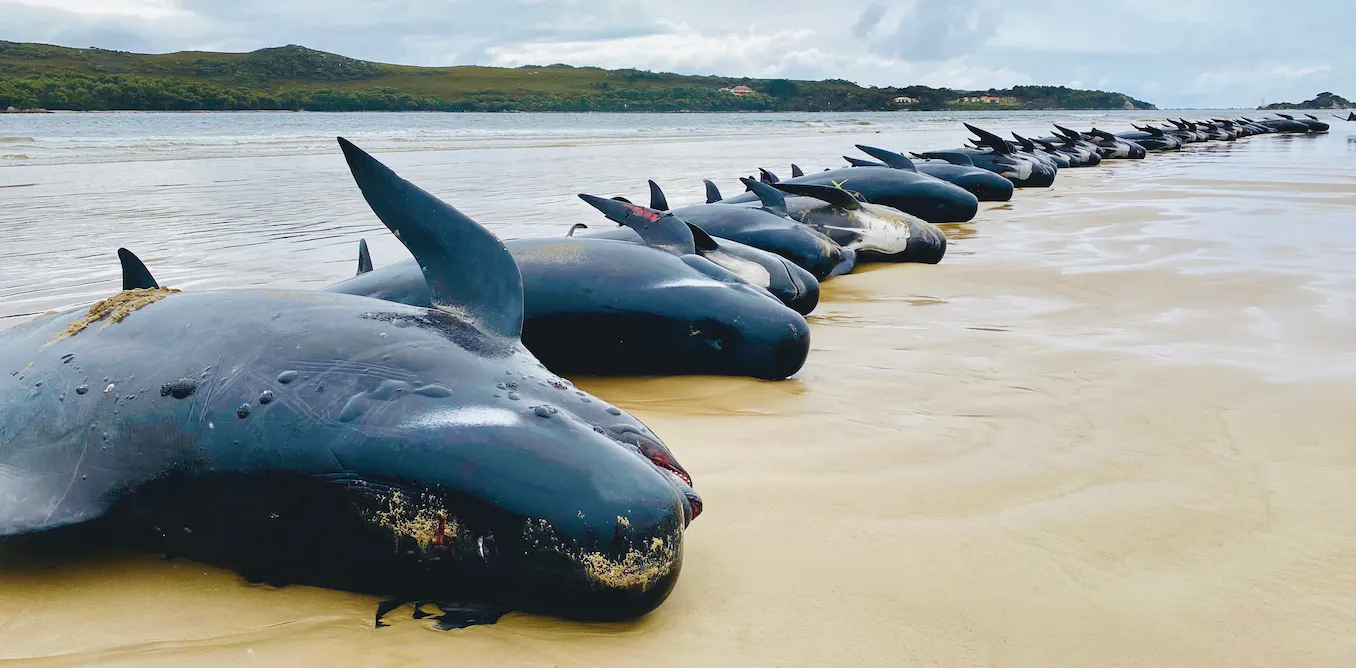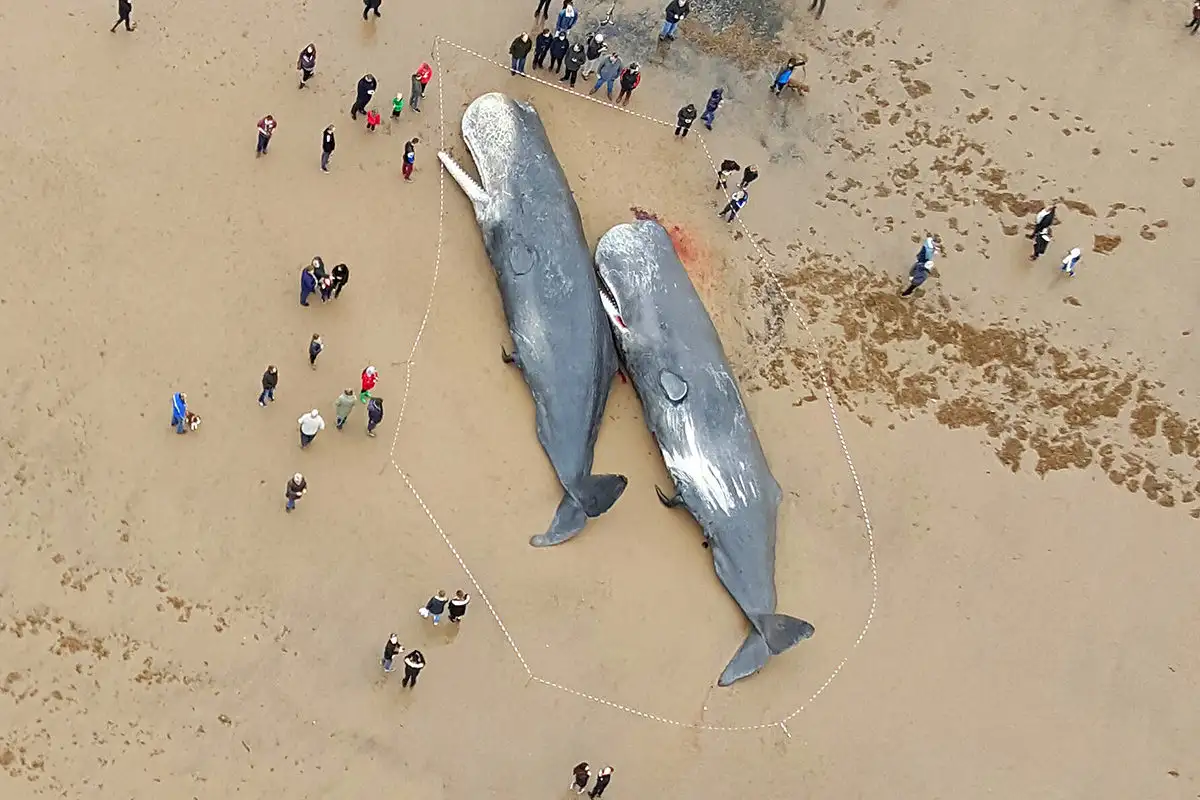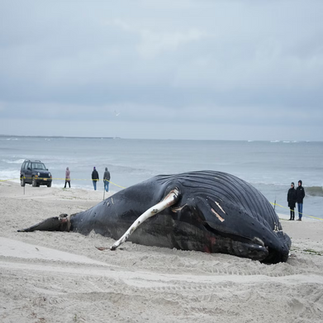Sonar - The Ocean's Unwanted DJ
- Bailey Tuddenham

- Mar 24, 2023
- 4 min read

Next, I wanted to explore one of the ways that technology is currently negatively impacting endangered species. Another insight that Asim gave me was into the use of sonar and how it is impacting marine animals. As with my post on the Przewalski's horse, I will first document my research and then explain my personal viewpoints and opinions.
Before researching this topic online, I got in contact with Nicky Nelson, who is an ex-employee of Dolphin Marine Conservation Park in Coffs Harbour, Australia. She worked closely with dolphins and other marine animals in her home country of Australia, before moving to the UK. Nicky currently works for the Zoological Society of East Anglia as an educator in conservation.
Nicky gave me some great areas to look into surrounding sonar and its impact on marine animals. Her suggestions were to dive into (if you'll pardon the pun) how marine animals use echolocation to carry out daily functions, and, therefore, how sonar affects marine animals' abilities to navigate, hunt and feed.
Echolocation
Echolocation is a biological system used by various animals in order to navigate. By emitting and receiving high frequency waves, these animals are able to detect the distance between them and other animals or obstacles. Echolocation within animals inspired technologies such as ultrasounds and, of course, sonar. The design process of taking inspiration from nature is known as biomimicry, and can be seen across a huge range of designs and inventions.

Many marine animals rely on echolocation for navigation, such as dolphins sperm whales and orcas. Echolocation allows them to navigate their underwater environments, as well as to find prey. Dolphins do this by emitting a series of clicks and listening for the echoes. They can then determine the distance, size, and location of objects in their environment, and even distinguish between different types of fish based on the echoes they receive. Sperm whales also emit clicks, and are the loudest animal in the world; their clicks can travel over 15 miles.
Some other marine animals don't use echolocation, but still rely on sound in order to communicate.
What Is Sonar?
Sonar is a tool used for navigation by ships. Like echolocation, sonar uses sound waves in order to detect the distance to different obstacles underwater. Waves are emitted and received, and the distance is calculated based upon the time between the waves being transmitted and received. It is considered to be an extremely important technology as it allows captains to know what's going on below the surface of the water, which, obviously, isn't usually visible.

The technology is used in almost all marine vehicles, including military ships, cruise ships, yachts, fishing boats and cargo ships.
Impacts From Sonar
From the previous two sections of research, it is immediately apparent how sonar is having an impact on marine animals.
Firstly, the waves emitted by sonar are interfering with the waves being received by animals that rely on echolocation and sound to navigate and communicate. The noise from sonar prevents the marine animals from being able to successfully navigate their environment or locate food. With an inability to locate prey, the animals can starve to death.
In addition, sonar affects their basic biological functions, and can cause them to become extremely disorientated. There have been a number of incidents of animals, such as whales, washing up on beaches or colliding with ships due to an inability to navigate.
Thirdly, sonar can actually cause physical damage to the organs of marine animals. The sound from sonar can be so loud and intense that it actually causes gas bubbles to form in the tissue of their organs, which can lead to haemorrhages, decompression sickness, ruptured lungs and, ultimately, death.
And, if the waves from the sonar don't directly harm the animal, the animal can still be harmed whilst trying to avoid or get away from them. Whales will swim hundreds of miles, just to try and escape the waves from sonar. There have been instances of whales rapidly changing depth and location in order to avoid the sonar waves, which causes bleeding from their eyes and ears. Some even beach themselves just to get away from the waves.

My Thoughts
This is a tricky one. In the world we live in, we heavily rely on the use of marine vehicles for food and products, and safe navigation of these ships is extremely important for ensuring that we have enough food to sustain different areas of the planet. For these reasons, I think sonar is an extremely important piece of technology.
However, we also use sonar for recreational vessels, too. Now, I'm part of the problem here. I've been lucky enough to have travelled on a range of cruise ships in the past 20 years. These ships still need to be able to safely navigate the sea in order to maintain the safety of their passengers. But, do we need cruise ships? Like I say, I'm part of the problem here... I think the cruise industry is a great one, and I am a strong supporter of industries that are based on pure fun and lifetime experiences. But, should this be at the expense of marine animals? Definitely not.
So, what can be put in place in order to sustain our imports and exports, military vessels and allow people to go on a fantastic voyage of a holiday?
At the moment, the only real tests that are taking place are in using lower-powered sound waves to navigate ships and detect obstacles underwater. In my opinion, this isn't solving the issue. All it's doing is slightly reducing the impact on marine wildlife. There must be a way in which we can navigate underwater without the use of sound waves... I wonder what that could be.
Could it be a series of automated, underwater vehicles that travel at a fixed distance of all sides of a ship, with cameras that can detect upcoming obstacles before the ship reaches them? I'm not sure. That would be the first idea off the top of my head.
Read More:







